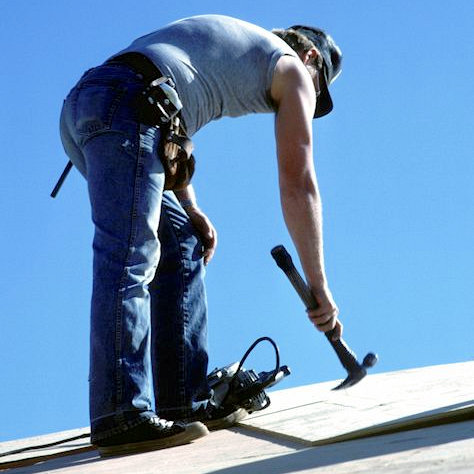Posture
Posture is the position of the body while performing work activities.

Awkward posture is a deviation from the ideal working posture of arms at the side of the torso, elbows bent, with the wrists straight.
Awkward postures typically include reaching behind, twisting, working overhead, kneeling, forward or backward bending, and squatting.
If the posture is awkward during work, there is an increased risk for injury. The more the joint departs from the neutral position, the greater the likelihood of injury.
Open the link below to see specific postures that may be associated with increased risk of injury.
- Wrist flexion or extension that occurs regularly is associated with a greater risk of carpal tunnel syndrome.
- Ulnar deviation of the wrist of greater than 20 degrees increases the risk of pain and other disease.
- Shoulder abduction or flexion of greater than 60 degrees for more than one hour a day increases the risk of acute neck and shoulder pain.
- Hands working at or above shoulder level can result in increased risk of tendinitis and various shoulder diseases.
- The greater the angle of flexion of the neck, the more quickly potentially severe neck and shoulder pain results.
- Bending at the lower back while working increases the likelihood of low back disorders.
Open the link below to see rules for proper posture while sitting and standing at workstations.
Rules to follow for sitting workstations:
- The angle between the upper arm and the forearm should be 70 to 135 degrees.
- The angle between the upper and lower leg should be 60 to 100 degrees.
- The angle between the torso and the thigh should be greater than 90 degrees.
- The feet should be placed flat on the floor.
Rules to follow for standing workstations:
- The work surface should be 2 - 4 inches below elbow height for precision work.
- The work surface should be 4 - 6 inches below elbow height if lifting light weights and working with bins, tools, and other materials.
- The work surface should be 6 - 16 inches below elbow height if lifting heavy weights.
Knowledge Check Choose the best answer for the question.
3-8. The more the joint departs from the _____, the greater the likelihood of injury due to poor posture.
You forgot to answer the question!
